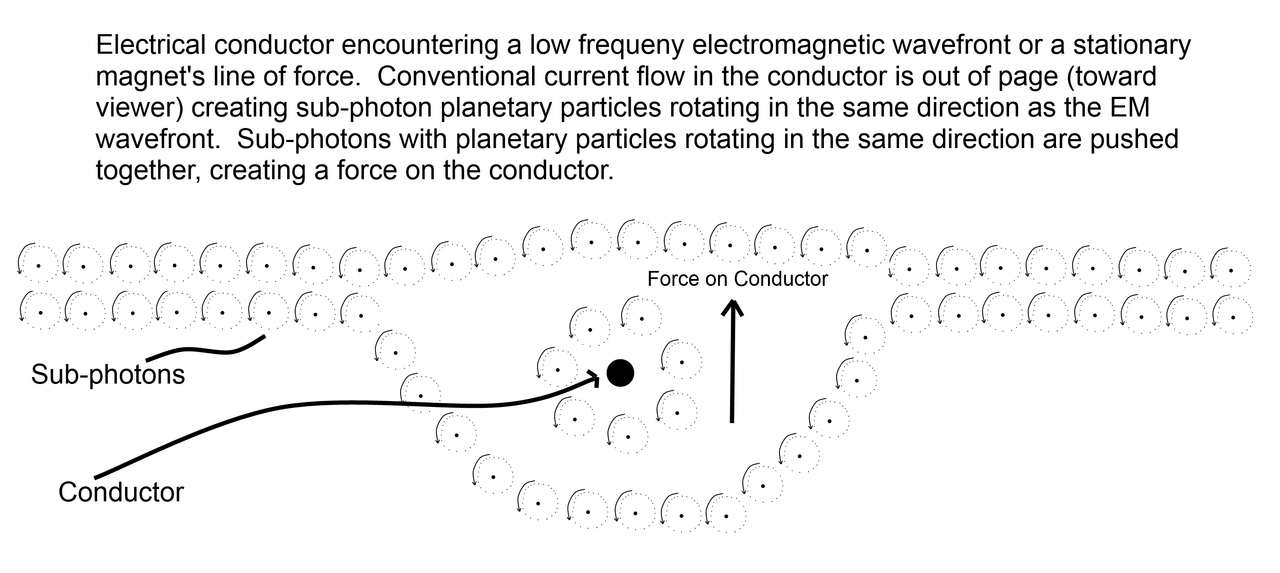by galaxy12 » Thu Feb 15, 2024 7:03 pm
Sub-photon (Magnetic) Rocket Propulsion
According to the author's previous papers regarding sub-photon behavior, sub-photons with planetary particles rotating in the same direction are pushed together. This author has proposed that the magnetic force is due to an alignment of planes of rotation of sub-photon planetary particles. Using this concept of magnetism, the following illustration shows how a conductor creates a surrounding field of sub-photons with rotating planetary particles. If the conductor encounters another field of sub-photons along a stationary or low frequency magnetic line of force, a force on the conductor will be created.

Using the same concept as illustrated above, a rocket traveling through space uses a long rectangular or oval-shaped loop of wire to create 2 magnetic (sub-photon) shields. The first field is caused by a wire near the rocket that has current traveling toward the viewer (out of the page). The second field is caused by a trailing loop of wire traveling into the page (away from the viewer). If the distance from the rocket's first magnetic field and the second field is approximately one-half of the wavelength of earth's magnetic field line ahead of the rocket, the force on the rocket can be maximized.

Sub-photon (Magnetic) Rocket Propulsion
According to the author's previous papers regarding sub-photon behavior, sub-photons with planetary particles rotating in the same direction are pushed together. This author has proposed that the magnetic force is due to an alignment of planes of rotation of sub-photon planetary particles. Using this concept of magnetism, the following illustration shows how a conductor creates a surrounding field of sub-photons with rotating planetary particles. If the conductor encounters another field of sub-photons along a stationary or low frequency magnetic line of force, a force on the conductor will be created.
[img]https://i.postimg.cc/d09mNqCh/subphoton-structure-in-wavefront.png[/img]
Using the same concept as illustrated above, a rocket traveling through space uses a long rectangular or oval-shaped loop of wire to create 2 magnetic (sub-photon) shields. The first field is caused by a wire near the rocket that has current traveling toward the viewer (out of the page). The second field is caused by a trailing loop of wire traveling into the page (away from the viewer). If the distance from the rocket's first magnetic field and the second field is approximately one-half of the wavelength of earth's magnetic field line ahead of the rocket, the force on the rocket can be maximized.
[img]https://i.postimg.cc/d1tRzzR4/subphoton-structure-in-wavefront-with-rocket.png[/img]